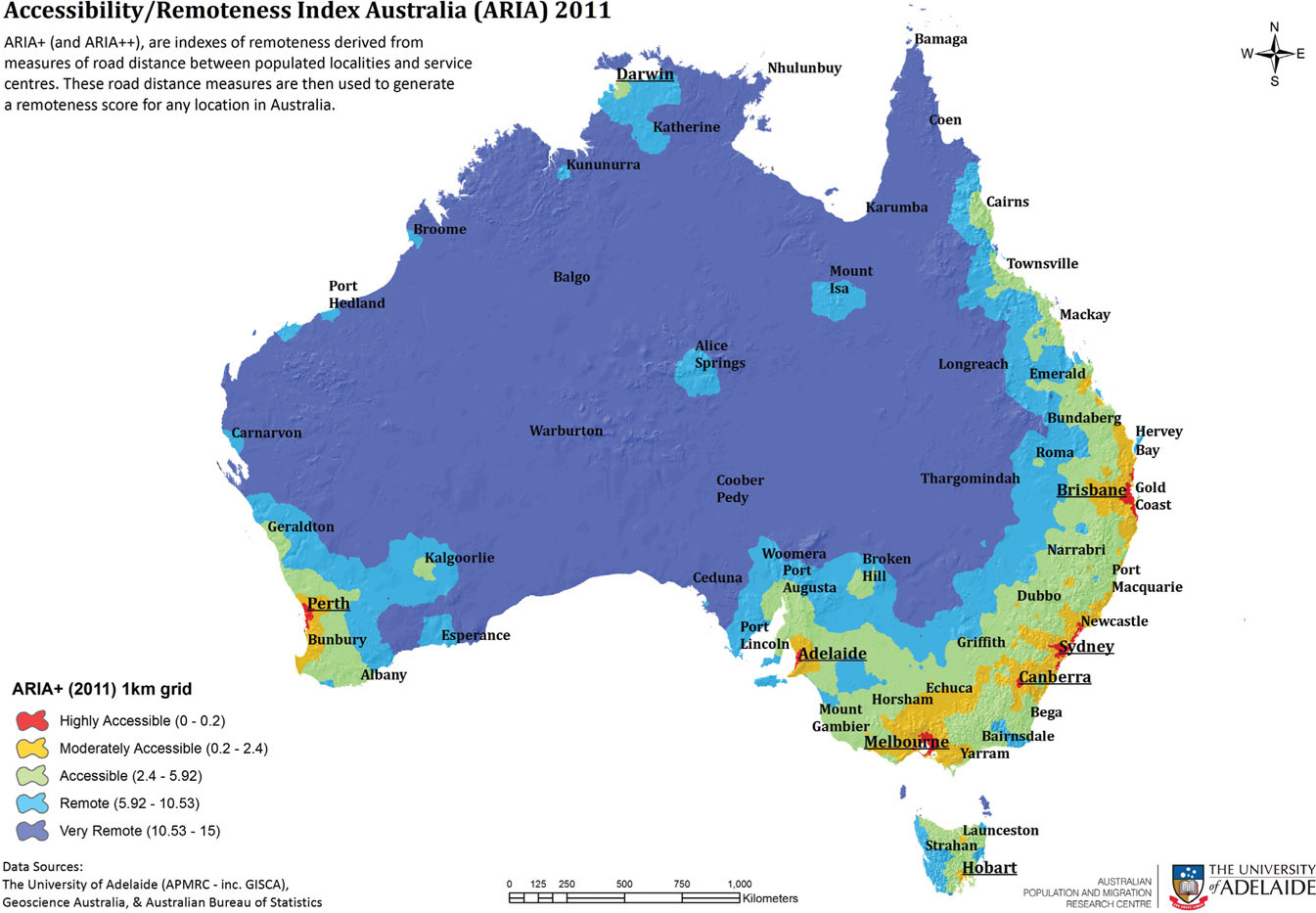5.4 Transport
Where we live and the types of transport available to us have a major influence on how we live and connect with other places: people who live in a capital city obviously have different transport choices and access to services, such as specialist doctors and universities, from people living in remote areas of Australia.
The 2011 Australian census showed that 66% of Australia’s population lived in the capital cities – just over 20% live in the Greater Sydney area and just under 20% live in the Greater Melbourne area.
The Australian Bureau of Statistics (ABS), with the Adelaide University Australian Population and Migration Research Centre, has developed the Accessibility and Remoteness Index Australia (ARIA) map (see below) to show the levels of accessibility to and remoteness from service centres in Australia. Access and remoteness are determined by the physical road distance from the settlement to the nearest service centre; there are five service centre categories, based on population size. The index ranges from 0 (high accessibility to largest service centre) to 15 (high remoteness from small and large service centres): an inner regional zone has larger service centres, of between 48 000 and 249 999 people, and an outer regional zone has service centres of between 18 000 and 47 999 people.
As members of our community we have a right and responsibility to be involved in planning for the future of our community and its connection with other places.

| Area | People (millions) |
|---|---|
| Major cities | 15.1 |
| Inner regional | 4.3 |
| Outer regional | 2.1 |
| Remote | 0.32 |
| Very remote | 0.17 |
Source 5.9 The distribution of the Australian population according to ARIA
DEVELOPING YOUR UNDERSTANDING 5.8
- Suggest why settlements such as Broome and Mt Isa are identified as remote rather than very remote, even though they are located in very remote regions of Australia.
- Use the Accessibility Remoteness Index map (below) an atlas or your own experience to identify three places – a capital city, an outer regional settlement and a remote or very remote settlement – in Australia. Use your knowledge and research from the internet and other sources (for example, you could contact a school) to complete the following table on transport choices and issues.

Capital city Outer region Remote/very remote region Transport choices Major transport and access to services issues - Provide an argument to either support or reject the statement that ‘the internet has reduced the isolation of remoteness’. Hold a class discussion on this topic.

